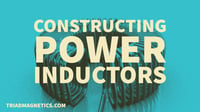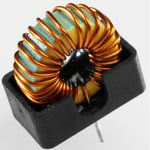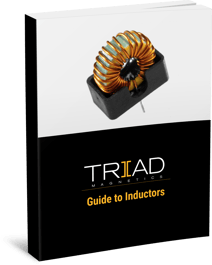Power inductors are found in every application that requires current control — everything from small household appliances to electronic devices to the country’s power grid. For this reason, inductors are among the most important magnetic components in the industry.
Inductors control current by storing energy in a self-generated magnetic field; they pull energy from the highest points of current and release energy into low currents, thereby eliminating the “ripple effect” and stabilizing the flow of current.
This allows electrically powered equipment to function properly and reliably, without interruption.
Depending on the application, inductors may also be referred to as reactors or chokes, as they can be used to “choke out” certain frequencies. Power inductors are often used in filter reactors, interference reduction filters, and saturable reactors.
Click here to view our catalog of Inductors and ChokesImportant Factors to Keep in Mind During Construction

When designing and constructing a power inductor, several factors should be taken into consideration to ensure optimal performance and reliability. Before beginning construction, make sure you have a thorough understanding of your application and its specific needs, as this will determine the style and type of inductor.
Once you’ve determined the specifications and properties demanded by your application, you can start considering the specific variables that will help you meet those requirements.
Core Material
Power inductors usually require very high induction levels, so it’s important to ensure that the inductor’s core material is conducive to this. Materials with high permeability and low saturation points are generally not ideal.
Core Shape

The shape of the core can greatly affect an inductor’s overall properties. C cores, a very common choice, are wrapped with a single continuous, thin strip of material before being cut into two C-shaped halves. This type of core is ideal for operating at high inductance.
Insulation
Current control generates heat in a power inductor, and heat negatively impacts dielectric strength — an important aspect of a power inductor’s proper functioning. Therefore, power inductors must be insulated. Insulation material must be strong enough to withstand projected maximum operating temperatures, but not too strong as to dampen the inductor’s performance.
Learn More About Power Inductors
Core material, core shape, and insulation material are just a few factors to keep in mind when designing and manufacturing a power inductor for your unique application.
For more information on power inductors, including electrical characteristics, how to specify them, the difference between power inductors and common mode inductors, download our newest eBook, “Guide to Inductors.”







